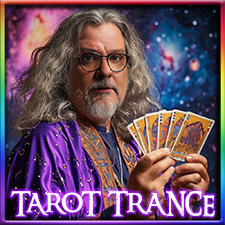
Introduction<
In the tapestry of film narrative, certain moments are meticulously woven to tug at the heartstrings of audiences, creating overwhelming emotional responses that often culminate in tears. These moments, aptly termed “tear-jerker moments” (TJMs), serve not merely as a vehicle for emotional engagement but also enrich the narrative, providing a cathartic release for both the character and the viewer. This essay explores the delicate artistry behind these poignant moments, examining how filmmakers and writers craft these scenes to elicit such powerful responses and discussing their profound psychological and emotional impacts on the audience.
Tear-jerker moments are pivotal in film because they not only enhance the emotional depth and complexity of the story but also foster a deep connection between the audience and the characters. By analyzing the narrative structure, cinematic techniques, and the delivery of performances, this essay will provide insights into the deliberate choices that guide the creation of TJMs. Furthermore, it will delve into the psychological resonance of these moments, exploring how they aid in the viewer’s emotional and empathetic development. Throughout, the essay will reference a variety of films across different genres and eras, illustrating the universal application and significance of tear-jerker moments in cinema.
Crafting Tear-Jerker Moments
Narrative Structure
The foundation of any tear-jerker moment is a strong narrative structure. Films like “The Green Mile” and “Schindler’s List” showcase how plot development and pacing are crucial in building up to these emotional peaks. The slow revelation of characters’ backgrounds and motives lays a groundwork where empathy grows, and expectations are set. For example, in “The Green Mile,” the gradual unveiling of John Coffey’s innocence and supernatural abilities endows his eventual execution with overwhelming sadness and injustice, making it one of cinema’s most profound tear-jerker moments.
Cinematic Techniques
Filmmakers employ various cinematic techniques to amplify the emotional impact of TJMs. In “Titanic,” the combination of James Horner’s haunting score with the visual spectacle of the sinking ship intensifies the tragic fate of the lovers. Cinematography also plays a critical role; for instance, the use of close-ups in “Les Misérables” during Anne Hathaway’s rendition of “I Dreamed a Dream” captures the raw emotion of her despair, pulling the audience directly into her experience.
Dialogue and Performance
The impact of a TJM is often sealed by powerful dialogue and compelling performances. Robin Williams’ performance in “Good Will Hunting,” particularly in the scene where he reassures Matt Damon’s character with the words “It’s not your fault,” demonstrates how actor delivery can be pivotal in triggering an emotional response. The simplicity of the dialogue, combined with Williams’ empathetic tone, allows the scene to resonate deeply with audiences, encapsulating the therapeutic potential of TJMs.
Integration of Film Elements
Integrating these elements—narrative, technique, and performance—filmmakers create moments that are not only memorable but also emotionally transformative. The climax of “The Lion King,” where Simba takes his rightful place on Pride Rock, exemplifies how voice, music, and visual narrative come together to deliver a powerful emotional experience, marked by the themes of redemption and fulfillment.
Audience Preparation and Expectation
Setting up expectations plays a crucial role in how TJMs are received. Films often use foreshadowing or symbolic elements earlier in the narrative to prepare the audience emotionally, making the eventual TJM feel both surprising and inevitable, a technique beautifully executed in “Forrest Gump.”
Psychological and Emotional Impact<
Emotional Catharsis
Tear-jerker moments often serve as a form of emotional catharsis for viewers. According to Aristotle’s concept of catharsis, exposure to art leads to the purging of emotions, a process that is deeply therapeutic. Films like “The Fault in Our Stars” provide a safe space for audiences to confront their fears about mortality and loss, ultimately allowing them to release these pent-up emotions through the shared experience of sadness and grief. The scene where Hazel and Gus share their fears and love in Amsterdam encapsulates this cathartic release, not only for the characters but for the audience as well.
Empathy and Connection
By witnessing the trials and tribulations of characters, audiences develop a sense of empathy, which can translate to increased emotional intelligence and compassion in real life. This phenomenon is evident in films like “A Beautiful Mind,” where viewers are drawn into the struggles of John Nash with schizophrenia. As Nash navigates his challenges, the audience’s empathy grows, allowing them to understand a complex condition and its impact on an individual’s life, fostering a deeper connection to the broader human experience.
Memory and Impact
The memory of tear-jerker moments often lingers long after the film has ended, influencing how audiences remember and discuss the film. Memorable scenes, such as the ending of “Cinema Paradiso” where Salvatore watches the film reel left by Alfredo, showcasing a montage of censored kisses, leave a lasting emotional imprint. These moments are frequently cited in discussions about the film, underscoring how powerful emotional moments can elevate a film’s place in cultural memory and critique.
Viewer Engagement and Film Success
The emotional depth provided by TJMs can significantly affect a film’s critical and commercial success. Emotional engagement often translates into greater viewer investment and can be a crucial factor in the film’s reception and longevity in the market. The success of “Titanic” is partly attributed to its powerful emotional portrayal of tragedy and love, which resonated with a global audience, leading to unprecedented box office success.
Psychological Healing
TJMs can also contribute to psychological healing by allowing individuals to process personal grief and trauma vicariously. The healing power of cinema is particularly evident in films that deal with universal themes of love, loss, and redemption, such as “Life is Beautiful.” By balancing the horrors of the Holocaust with a father’s protective love for his son, the film offers a poignant view of resilience and the power of human spirit.
Examples of Tear-Jerker Moments in Film<
Classic Cinema
In classic cinema, films like “Casablanca” and “Gone with the Wind” provide seminal examples of TJMs. The airport farewell in “Casablanca” where Rick convinces Ilsa to leave with her husband for the greater good, despite their love, is a classic tear-jerker. Similarly, the moment Scarlett O’Hara vows never to be hungry again in “Gone with the Wind” amidst the ruins of Tara, inspires a mix of admiration and sorrow in the viewer.
Modern Films
Modern cinema continues this tradition with films such as “La La Land,” where the final montage shows what might have been for the leading couple, a poignant exploration of love and personal dreams. Similarly, in “The Fault in Our Stars,” the pre-funeral scene where Augustus hears Hazel’s eulogy allows the audience to engage deeply with themes of young love and mortality.
Diverse Genres
Tear-jerker moments transcend genres, affecting audiences in dramas, comedies, and even animated films. The farewell scene in “Toy Story 3” as Andy leaves his toys at Bonnie’s house, captures a bittersweet moment of growing up and letting go, resonating with both children and adults.
Success and Failure of Tear-Jerker Moments<
Successful Tear-Jerker Moments
Successful tear-jerker moments are those that seamlessly integrate into the narrative, enriching the story and characters without feeling forced or manipulative. A prime example of a successful TJM is the scene in “The Shawshank Redemption” where Brooks is released from prison. His poignant narration of life outside, culminating in his tragic decision, profoundly moves the audience by highlighting themes of institutionalization and loss. Another notable example is the “Superman” scene from “The Iron Giant,” where the giant chooses to sacrifice himself to save the town. The moment is powerful because it culminates a journey of self-discovery and heroism, resonating deeply with themes of identity and sacrifice.
Unsuccessful Tear-Jerker Moments
Conversely, unsuccessful tear-jerker moments often suffer from a lack of authenticity or contextual integration, making them feel contrived or overly sentimental. An example of a failed TJM can be seen in “Collateral Beauty,” where the film attempts to evoke emotion through repetitive scenes of profound loss and elaborate metaphysical conversations. These moments often feel overly engineered and disconnect the audience due to their implausible setup and execution. Similarly, the ending of “Remember Me,” which controversially integrates a real-life tragedy into its climax, is criticized for exploiting a sensitive event for emotional impact, thereby alienating viewers.
Factors Influencing Success and Failure
The success of a TJM largely hinges on several factors:
1. Authenticity**: Moments that genuinely reflect the characters’ journeys and themes of the film resonate more deeply than those that seem inserted solely for emotional manipulation.
2. Timing and Pacing**: Effective TJMs are well-timed within the narrative arc—they feel like a natural culmination of the storyline rather than abrupt or disjointed.
3. Performance and Direction**: The credibility of actors’ performances and the director’s ability to subtly guide the scene significantly impact the moment’s authenticity and emotional weight.
Learning from Mistakes
Filmmakers can learn from unsuccessful TJMs by focusing more on character development and narrative integration rather than relying on shock value or melodrama. Maintaining a balance between emotional intensity and narrative flow is crucial.
Audience Reception
The success of a TJM is also influenced by audience reception, which can vary widely based on individual experiences, expectations, and cultural context. This variability underscores the importance of grounding TJMs in universal human emotions and experiences to broaden their appeal and effectiveness.
By examining these successful and unsuccessful examples, filmmakers and writers can better understand the delicate balance required to craft tear-jerker moments that genuinely engage and move their audiences.
Crafting TJMs
Tear-jerker moments, those poignant scenes designed to evoke deep emotional responses, serve as a cornerstone in the architecture of cinematic storytelling. This essay has traversed the landscape of such moments, examining how they are meticulously crafted through narrative structure, cinematic techniques, and compelling performances. By exploring various films, from classics like “Casablanca” to modern hits like “The Fault in Our Stars,” we have seen how these emotionally charged moments are not merely incidental but are often central to a film’s emotional depth and narrative drive.
The psychological and emotional impact of these moments on audiences cannot be overstated. Tear-jerker moments engage viewers on a deeply personal level, offering a cathartic release and fostering empathy and connection that transcend the screen. They invite viewers to reflect on their own experiences and emotions, thereby extending the influence of these films beyond their runtime. Films that successfully harness the power of TJMs not only achieve greater emotional resonance but also enhance their memorability, critical acclaim, and commercial success.
These moments have a profound effect on filmmakers as well. They challenge directors, writers, and actors to delve deeply into human emotions, pushing the boundaries of their creative expression. The crafting of TJMs requires a delicate balance of subtlety and intensity, which, when achieved, can elevate a film to achieve a lasting place in the hearts and minds of its audience.
Tear-jerker moments are a vital element in the storytelling arsenal of filmmakers. They are instrumental in transforming a simple narrative into a rich, emotional experience that resonates with viewers, encouraging a deeper understanding and appreciation of the human condition. As cinema continues to evolve, the crafting of TJMs will undoubtedly remain a key tool in creating meaningful and enduring film experiences.
With this comprehensive exploration, we not only appreciate the intricacies involved in creating these moments but are also reminded of the powerful role cinema plays in reflecting and shaping our emotions and perspectives. As we look forward to future films, it is clear that the tear-jerker moment will continue to serve as a profound touchstone for emotional engagement and narrative sophistication.
You Can Learn More

If you would like to learn more about using hypnosis techniques, consult our Core Skills program and other products found in our online store at http://briandavidphillips.net/store (you may wish to check out our package programs for even more value).
Our ErosPsyMagick+ program at http://briandavidphillips.net/erospsymagickplus is of particular interest as it has everything rolled into one comprehensive package . . . core skills, metaphysical magickal psychic, and eroticatrance ecstatic states.
If you’re in Taiwan and interested in hypnosis, check the services page linked to in the top left sidebar. Not in Taipei? Check the store for recordings in the same menu area as well as links to lots and lots of info and goodies. Of course, browsing this site will bring you to a digital ton of positive resources on a wide variety of topics as well.
Live Trance and Prosper,
Brian David Phillips
Trance Wizard
www.BrianDavidPhillips.net/blog
Tarot Decks and More
https://www.makeplayingcards.com/sell/wakingdreams
























